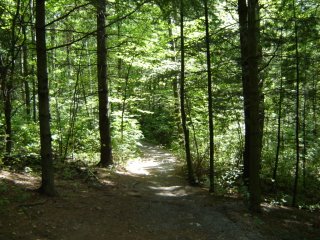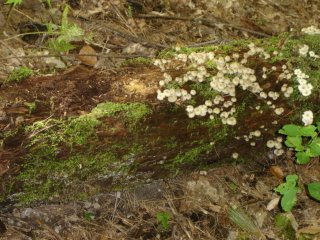From the Dog Days to the Dying Days of Summer


Everyone gets fed up, tired of the struggle. Summer, I guess, is like that. A prodigious, ongoing effort to ensure she doesn't disappoint her many fans takes its toll. Everyone needs a break from routine, a kind of holiday from the seemingly unending tasks placed before us in this universe - and summer, it would appear reasonably enough, is no different.
You're tired, take a break. So why do we mind when summer decides she's had enough for this calendar year and offers up all those indications in the most delicate of ways to let us know she's packing it in? Well, the thing of it is, she may be tired of our expectations, but we never, ever are tired of her presence. I guess we kind of resent her need to take a break. That's life, right?
So the days are cooler and wetter. The nights too are cooler. At night we can stand outside and if we listen carefully, we can hear the flutter of wings overhead and the muted sounds of chirps and tweets as birds begin their counter-migration, leaving for warmer climes. Personally, I'm beginning to worry about a particular female hummingbird so tame she hangs before our eyes in between slotting her beak into our fuschias, Morning Glories, sweet-pea flowers and nasturtiums. One year we had such a visitor and for some reason she died in our garden while her cousins fled south.
Bumble bees are busy at the roses in our back and front gardens, and moths and butterflies take advantage of the late-blooming turtlehead flowers. The huge heads of our beautiful, late-blooming dahlias are still cheerfully putting out their saucer-sized blooms, the false dragon's heads are late-season bloomers as well, and doing their best to keep things colourful, as are the black-eyed Susans, the profusion of purple cone flowers and garden asters. The neighbour's black cat still hides behind our bushes, hoping to spring out upon an unsuspecting chipmunk or bird.
But the wind is cool now when it blows, and already we see signs of trees remembering their duty to shut down their sap factories. Walking down our driveway, the first day children were back to school there was a pretty, slender young woman pushing a double stroller, and we greeted one another. We were strangers, but not for long. In the brief period it takes to walk from our driveway to the ravine entrance she introduced us to her four- and her two-year-old daughters, and we reminisced with her about our experiences in raising our own. Her older child is a Downs Syndrome child, the younger one not, and she has her life's work cut out for her.
After we slipped into the ravine, my husband stopped briefly, took my arm, and pointed to the side of the trail, and there was a beautiful young garter snake, curled in repose, yellow stripes bright on its back. Later, speaking with our daughter, she lamented that she had run into a frog with her lawn mower, and felt fortunate to see two garter snakes make their escape from the mechanical beast. Difficult to thwart this type of mishap when there is a wetland directly behind and below one's home.
The False Solomon's seal is drying up, in the ravine. Ditto the Queen Anne's lace. Still lots of bright goldenrod, and even fresh new fleabane, but at this time of year the mauve and the bright purple asters are king, more beautiful to my reckoning than their more plentiful, now muted, white siblings. Now the hawthornes are completely shorn of their leaves, the earliest of the deciduous to become naked.
But this time of year brings other remarkable woodland appearances. Mushrooms and fungi abound, and we see one really huge flat cap, startlingly white that has served as a repast for a squirrel. The display this day of mushrooms is amazing, they seem to have appeared overnight - mostly because that's exactly what they've done. The range in size, shape and colour of these fungi is astonishing. From the tiniest buttons in sprawling groups to the singular oddly-shaped mushroom they amaze us in their proliferation throughout the understory of the wood.
We walk more slowly, intent on letting no rare glimpse escape our notice. Not to worry about the many pale brown caps sitting companionably together on the damp soil, same for the white ones that look good enough to bring back to our kitchen. We see large flat dish-shaped clumps of mahogany-coloured mushrooms on logs, and clusters of shelf fungi on tree trunks heavily covered with moss. There are various shades of yellow - pale and sunnily bright ones, neatly small and sprawlingly huge. There is a single, oddly fluted mushroom the colour of orange-red flame and we regard it appreciatively. Along with the small group of tiny dark purple mushrooms ripening to a larger, flatter shape turned soft mauve.
The flowers of summer have given way to the earth-flowers of Autumn.

<< Home